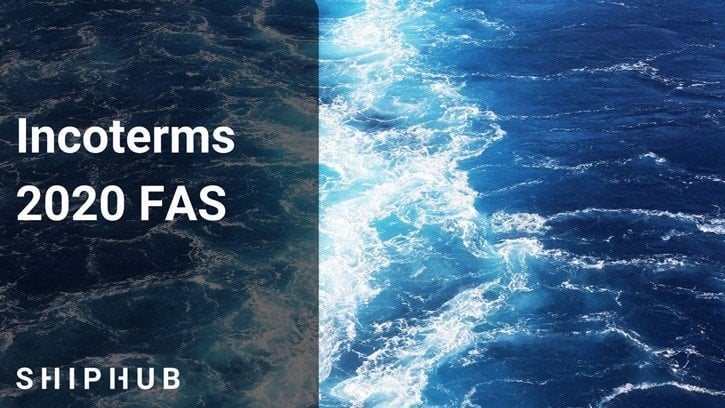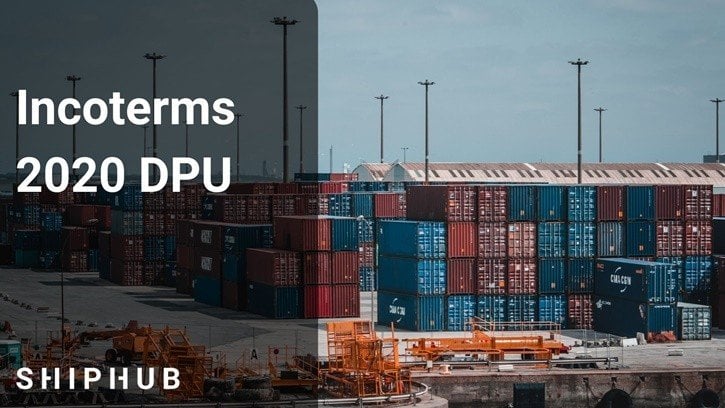Incoterms rules define the division of the risk and costs between seller and buyer in international trade. It is noteworthy that rules from group F require specifying the sending port in advance. Incoterms FAS (Free Alongside Ship) indicates that the risk transfers to the buyer when the goods are placed alongside the ship. However, it is not recommended to use this rule if the buyer is not able to pay the costs related to the export of the goods.
Incoterms 2020 FAS – Allocation of costs
| The seller bears: | The buyer bears: |
| the costs of export formalities: customs, taxes, export authorization, export security clearance and the cost of obtaining all official permits; | the costs of import and transit formalities: customs, taxes, import permit, import security clearance and costs of obtaining all official permits; |
| the cost of providing the buyer with proof that the goods have been delivered under the contract; | the costs of obtaining the contract of carriage; |
| the costs related to the shipment of goods until they are delivered; | any additional costs if the buyer fails to fulfill its obligations; |
| the costs of control activities, such as quality control, measurement, weighing, counting, delivery of appropriately labeled packaging. | the costs related to the conclusion of the contract of carriage. |
What are the seller’s obligations?
- Carrying out all the duties under the terms of delivery specified in the contract. This means delivery of the goods along with a commercial invoice in conformity with the contract of sale and other related documents.
- Delivering goods by placing them alongside the ship within the prior specified period and at the named port indicated by the buyer.
- Informing the buyer in advance of the delivery of the goods.
- Providing at his own expense a document confirming delivery of the goods to the buyer. If such proof is a transport document, the seller must assist the buyer, at his request, risk, and cost, in obtaining it.
- at the buyer request, risk and cost in obtaining any documents necessary for transit and import clearance formalities.
- Packaging and marking the goods.
- Operating according to all transport-related security requirements until delivery of the goods to the buyer.
What are the buyer’s obligations?
- Concluding the contract of carriage from the named port of shipment, except where the contract of carriage is made by the seller (at the buyer’s expense and risk).
- Assisting the seller, at his request, risk, and cost, in obtaining any documents necessary for the export clearance formalities.
- The buyer must notify the seller in advance of any safety requirements related to transport, ship name, loading point and the delivery date within the period agreed in the contract.
Delivery of goods
The FAS Incoterms rule considers a delivery complete when the seller delivers the goods by placing them alongside the ship indicated by the buyer or at the point of loading/port (if any) or when purchasing already delivered goods.
In the case of FAS Incoterms, it is recommended to determine as clearly as possible the loading point at the named port of shipment where the goods are to be transferred from the quay or barge to the ship. This is because handling charges and the transport of goods from the quay or barge may vary depending on the port’s practice.
Insurance of goods on the terms of Incoterms 2020 FAS
In the case of FAS Incoterms, there is no obligation to make a contract of insurance.
Incoterms 2020 FAS in transport
The FAS rule is used only for sea or inland waterway transport.
The seller must provide goods and a commercial invoice under the contract of sale and any other proof of compliance that may be required by the contract. At the same time, these documents can be provided in both paper and electronic form.
FAS and other Incoterms rules
It is recommended to apply the FCA rule instead of FAS Incoterms when the goods are handed over to the carrier before placing them alongside the ship, for example when the goods are handed over to the carrier at the container terminal. This is due to the allocation of costs and risks between the seller and the buyer.





